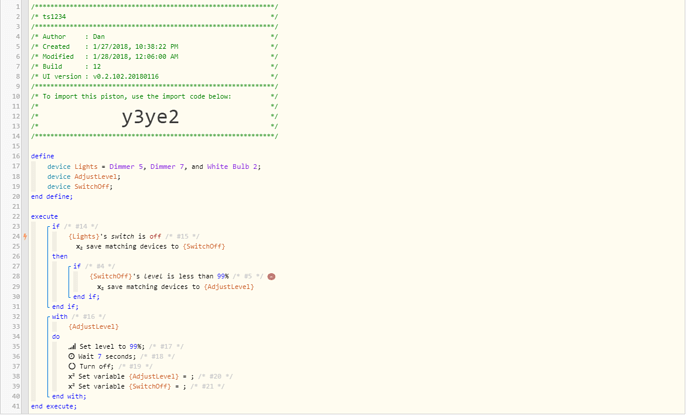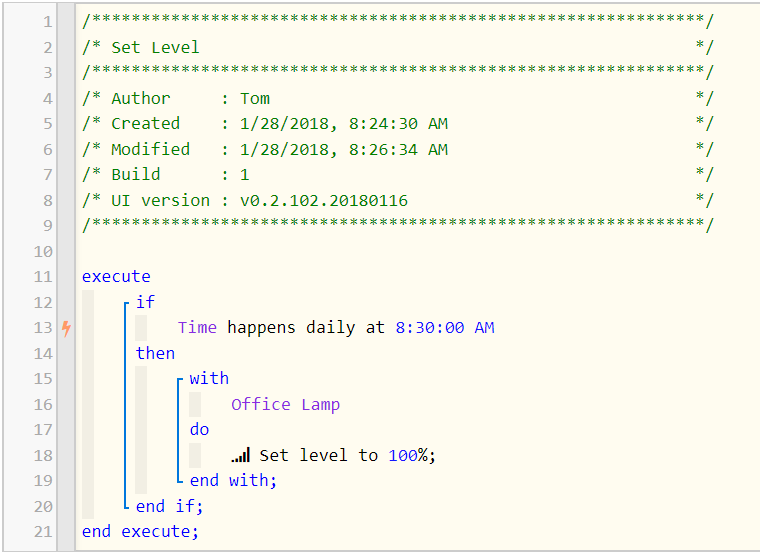What a community! Thanks for taking the time and effort to respond…
Mike1616…what you have set up is very cool and probably a great add on routine! What I want though is conceptually quite simpler. If I manually turn the switch on I want it bright to see something and simply want if I turn the switch on at the wall it to always go straight to 100. (but not if the command comes via ST/Alexa)
michicago
Your routine is much like mine…and unless you have a wall switch that behaves differently, runs into the same problem mine does…which I assume it does since you send a “turn off” command after the set level. Any set level command, as in the simple routine pasted in below, TURNS ON the light. It does work, but the outcome is I turn the light switch off…then it comes on bright…then it turns off. IE - The end result is correct but a light flashing back on every time for a bit every time I turn it off manually is not exactly the behavior anyone would expect out of a normal wall switch.
If there is no way to change the “last level” state of the switch without turning the light on…what I want is not possible with the products on the market today.
The routine below is just to show that if you send the set level command to a switch it’s actually “turn the switch on to level X” command as it turns on my light. Silly me, every time I had coded this type of thing before I had always sent a “turn on” command right after the “set level” command because I thought I had to do so.
The only real way I can think of doing this still is create virtual switches for every light switch that ST/Alexa would turn on and then if only the real switch alone was turned on at the wall (no toggle of the virtual) send a “set level 100” command to the physical switch.
I’m pretty sure that would work…but what a pain to rebuild all my existing routines to trigger over twenty new virtual devices. It just seems like this should be easy. I’m guessing in a few years it will be. I think there are also some switches on the market that if you do something like double tap them they go to 100, but not really feeling like spending over $1000 replacing them either…at least not yet.
Again…THANKS guys!


 !
!
 .
.
